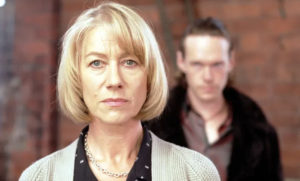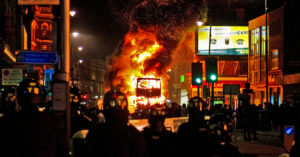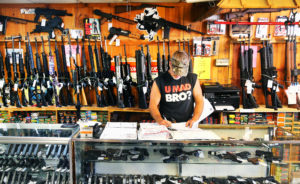The public unsurprisingly jumped to conclusions when it was reported, earlier this month, that a Metropolitan Police officer had fatally shot an apparently unarmed black man. Voices from the black community and beyond have speculated that the shooting was either yet more evidence of a “trigger-happy” police force, or a reckless accident known in the business as a “negligent discharge”. But it is still too soon to judge what happened.
The only facts we have are these: on 5 September, 24-year-old Chris Kaba was being pursued by police after an automatic number-plate recognition (ANPR) camera linked the car he was driving to an earlier firearms offence. After being stopped on Streatham Hill in South London, Kaba was killed by a single shot fired through the driver’s side of the car’s windscreen by a Met police officer.
That officer, who remains unnamed, has been suspended from frontline duties — a routine procedure under the circumstances. But the police’s view of the incident, according to sources, is that their unnamed employee acted in defence of himself, his colleagues and the general public. It’s a line that’s hard to argue with, if one makes a clear case that the individual feared for life or limb.
Faced with a lethal threat, police officers have, under English law, the same right to self-defence as the rest of us. The application of a layman’s “reasonable force”, though, might be augmented by a professional order to “shoot to stop” any suspect engaged in armed violence or life-threatening behaviour. And in practice, shooting to stop often amounts to shooting to kill: police marksmen are trained to aim for the torso — the easiest part of the body to hit — and a single well-placed round, let alone five or six, frequently proves fatal.
The public’s understanding of marksmanship, ballistics, perceptual distortion, perpetrator behaviour and human anatomy is largely based on far-fetched cop shows and disbelief-defying Hollywood beat ‘em ups. The naïve belief that a violent suspect can be easily immobilised by a good “winging” is ubiquitous — and ridiculous. Most people couldn’t hit their own front door with a football from six feet, yet we expect armed police officers to shoot a knife-wielding terrorist in the hand, or aim for the arm of a driver who’s weaponised a vehicle. We suppose that a violent suspect would just shout “Ouch!”, stop what they’re doing, and go quietly into custody. Well, good luck with that.
As former Met marksman Tony Long told me, when I interviewed him for the Channel Four documentary, Secrets of a Police Marksman: “If they pose an immediate threat to you, they cease to be a human being. They are a target. They have to be shot and you shoot them.” The reality is, an armed confrontation with a police officer isn’t meant to a fair fight. The shock and awe tactics employed by the service, particularly in vehicular hard stops, are designed to intimidate, destabilise and immobilise a suspect by using superior force. As one armed officer told me: “If you don’t want to get killed on the streets of London by someone like me, don’t go out there with a knife or gun thinking you’re fucking Charlie big potato.”
Now in his sixties and retired, Long is a highly commended Met veteran of 33 years, 25 of which were spent in the force’s ever-evolving specialist firearms unit. He knows all too well what it means to shoot to stop a “target”, having hit five suspects in his career, killing three. (“I’ve got a real problem with bullies,” he says.) The first was Yardie police informant Errol Walker, in Northolt, North West London, during the Christmas holidays of 1985. I remember the incident well: it followed the siege of a flat on a council estate, and in those days of scant TV offerings, the unfolding drama made for gripping viewing. His handlers tried, several times, to coax Walker out of the darkened flat with the offer of takeaway pizza.
Walker’s crime was stabbing his wife’s stepsister to death, before throwing her over the balcony and taking the victim’s four-year-old daughter hostage. In the end, he was double-tapped by Long, but miraculously survived. Grabbing the child, who had been stabbed in the neck by Walker, Long ran out of the flat, carrying her to safety and leaving the incapacitated criminal to be dealt with by colleagues.
No one can fault Long’s actions on that day — nor on another, two years later, when he took down three heavily-armed robbers at a meat-packing factory in Plumstead, South East London, killing two and injuring a third. Such were his gun-toting heroics that the News of the World, having discovered his real name, dubbed him “Dirty Tony”, a moniker he bridles at. The paper also reported the nickname foisted on him by a police commander, Sue Akers: “the Met’s own serial killer”. Her loose lips wound up costing the Met £5,000 in damages, after Long sued his former employers.
But it was Long’s final shooting that echoes the Chris Kaba incident, in that it was more ethically and practically ambiguous, and called into question the definitions of hero cop, psycho-villain, and, yes, racial profiling.
In April 2005, the officer found himself opening fire on 24-year-old Azelle Rodney, who was sitting in the back of a VW Golf with his fellow gang members, Wesley Lovell and Frank Graham, in the front. All three were black. Police intel, which included the use of a surveillance drone, had indicated that the men were armed with machine guns and en route to rob a gang of Colombian drug dealers somewhere in the outer reaches of North London. Long fired eight rounds from his Heckler and Koch G36 carbine at him, six of which hit Rodney, in the face, head, neck and chest. Rodney died of his wounds.
To cut a long story short: the Crown Prosecution Service (CPS) initially concluded that there was insufficient evidence to convict anyone in connection with Rodney’s death. There followed a long, drawn-out inquest, then a judge-led public inquiry, and finally an Old Bailey murder trial in 2015, which saw Long acquitted and his name finally cleared.
All the signs suggest there will be a similarly drawn-out exercise in truth-seeking in the wake of Kaba’s death. Heat, confusion and protest have followed the incident: Sky News bizarrely reported that a large central London protest, featuring Stormzy, was a memorial march for the Queen. The Independent Office for Police Conduct has now opened a homicide inquiry, a move that has prompted the Met’s approximately 2,500 armed officers to threaten handing in their weapons in support of their beleaguered colleague. It’s not the first time such threats have been made, nor will it be the last.
A cynical solution to the perceived problem of specialist firearms units “holding the public to ransom” — a solution that would also, conveniently, help the police regain the streets from violent criminals — would be to simply arm all police officers. The UK (excluding Northern Ireland) is one of just 18 countries, out of 193, that does not routinely arm police. Doing so would surely level the playing field between officers and armed criminals, especially female officers, who routinely face suspects with an advantage in both size and weaponry. Why should the 34,000 Met police officers tasked with keeping a city of nine million people safe be expected to do so, for the most part, with little more than a stick and a pair of handcuffs?
“The subject of arming the police has been going on for years and is normally raised after an officer is shot dead,” Long says, “or more recently after terrorist attacks such as Borough Market where unarmed officers received life changing injuries because they weren’t correctly equipped.” Last week also delivered up another justification: on Friday, in Leicester Square, a female police officer was left with potentially life-changing injuries after she and a male colleague were stabbed by a “frenzied” suspect.
“Sadly, we’re now at a point where there is more justification in routine arming than ever, but at the very point where the police have never been in a worse position to implement it,” says Long. “The current government and the last two Mayors of London have got rid of 70% of police stations required to securely store sidearms, and all but one of the ones containing a firing range.” The other issue is that “no serving police officer has been recruited on the understanding that they will be required to carry a firearm, so they could not be forced to do so”. Understandably, “incidents such as the recent Streatham shooting reinforce the attitude among many officers that they would never carry a firearm for fear of the way they’d be treated if they ever had to fire it”.
Long says that for a sea change to occur, every Met recruit who joins the service must be prepared to be armed — if not immediately, then at some point in the future. If they refuse, their employment should be terminated.
As Long’s career illustrates, an officer who shoots someone may be characterised as either a hero or a villain. The fatal shooting of Jean Charles de Menezes at Stockwell tube station in 2005 — a tragedy of mistaken identity that occurred in the hunt for the 21/7 terrorist, Hussain Osman — tested the resolve of many armed officers, and the thickness of London’s collective skin. But, such was the capital’s siege mentality following the 7/7 bombings, Londoners expected the police to do what they had to do to take out the bad guys. As former Metropolitan Police Commissioner, Lord Blair, would later tell me: de Menezes “died in the fog of war” — a sentiment that, alas, many Londoners were prepared to accept in the short-term.
Equally, some battle-hardened Londoners would have written off Mark Duggan’s death at the hands of a specialist firearms unit in August 2011 as just another “scumbag” getting what he deserved — regardless of the details of the shooting. Others protested, and ultimately his death ignited days of rioting. Once again, the Met’s relationship with London’s black community was strained, as it had been after the accidental shooting of Cherry Groce, which triggered the second Brixton riots in 1985.
Ultimately, every police shooting leaves both the public and the police damned if we do, damned if we don’t. We want the police to protect and serve and take out the human trash that other state agencies are failing to catch, but we don’t want to give them the resources to do their jobs. Rampant racial profiling, the industrial scale stop-and-search of black youths, and the service’s failure to get a grip on London’s violent gang crime often makes me question the Met’s motives, as well as its strategies. But as the old saying, mistakenly attributed to Orwell, goes: “People sleep peacefully in their beds at night only because rough men stand ready to do violence on their behalf.” To put it another way: being an armed cop is a dirty job, but someone has to do it.
Disclaimer
Some of the posts we share are controversial and we do not necessarily agree with them in the whole extend. Sometimes we agree with the content or part of it but we do not agree with the narration or language. Nevertheless we find them somehow interesting, valuable and/or informative or we share them, because we strongly believe in freedom of speech, free press and journalism. We strongly encourage you to have a critical approach to all the content, do your own research and analysis to build your own opinion.
We would be glad to have your feedback.
Source: UnHerd Read the original article here: https://unherd.com/




